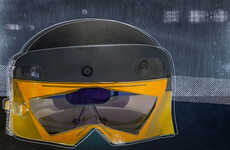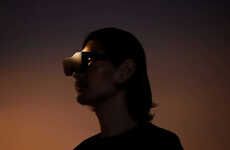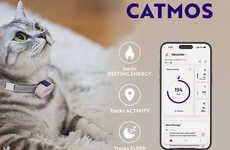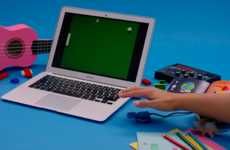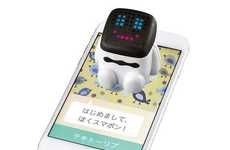RadarCat Uses Google's Project Soli to Accurately Predict Any Object
References: sachi.cs.st-andrews.ac.uk & fastcodesign
Researchers from University of St. Andrews have created a new system called RadarCat that can recognize virtually any object simply by touching it. Without the use of any cameras or visual sensors of any sort, RadarCat quickly deduces whatever object is placed on it, distinguishing between apples and oranges, smartphones and tablets or anything else.
RadarCat uses Google's Project Soli as its basis. The Google project, which was completed last year, is an experimental smartwatch sensor that can recognize even the tiniest of gestures. Though it was never made available commercially, Google shared the tech with select labs, including the researchers at St. Andrews.
RadarCat is so sensitive that it can recognize whether a glass is empty or full, and it can even recognize what type of liquid is inside. As such, one of RadarCat's potentially limitless use cases could be to automatically alert servers when consumers need a new drink.
RadarCat uses Google's Project Soli as its basis. The Google project, which was completed last year, is an experimental smartwatch sensor that can recognize even the tiniest of gestures. Though it was never made available commercially, Google shared the tech with select labs, including the researchers at St. Andrews.
RadarCat is so sensitive that it can recognize whether a glass is empty or full, and it can even recognize what type of liquid is inside. As such, one of RadarCat's potentially limitless use cases could be to automatically alert servers when consumers need a new drink.
Trend Themes
1. Object-recognizing Technology - Opportunity for businesses to develop innovative systems that can accurately identify and recognize various objects without the use of cameras or visual sensors.
2. Gesture-recognition Sensors - Potential for disruptive innovation in the development of devices or applications that can detect and interpret even the smallest gestures for a wide range of purposes.
3. Smart Object Detection - Opportunity for businesses to create automated systems that can detect the contents and characteristics of various objects, enabling new applications in customer service and inventory management.
Industry Implications
1. Technology - There is potential for disruption and advancement in the technology industry through the development of object-recognizing devices and gesture-recognition sensors.
2. Hospitality - The hospitality industry can benefit from automated systems that detect customer needs, such as developing smart drink dispensers that can automatically alert servers when a customer needs a refill.
3. Retail - The retail industry can explore the use of object-recognition technology to enhance customer experience by creating interactive displays or personalized recommendations based on detected objects.
1.1
Score
Popularity
Activity
Freshness



